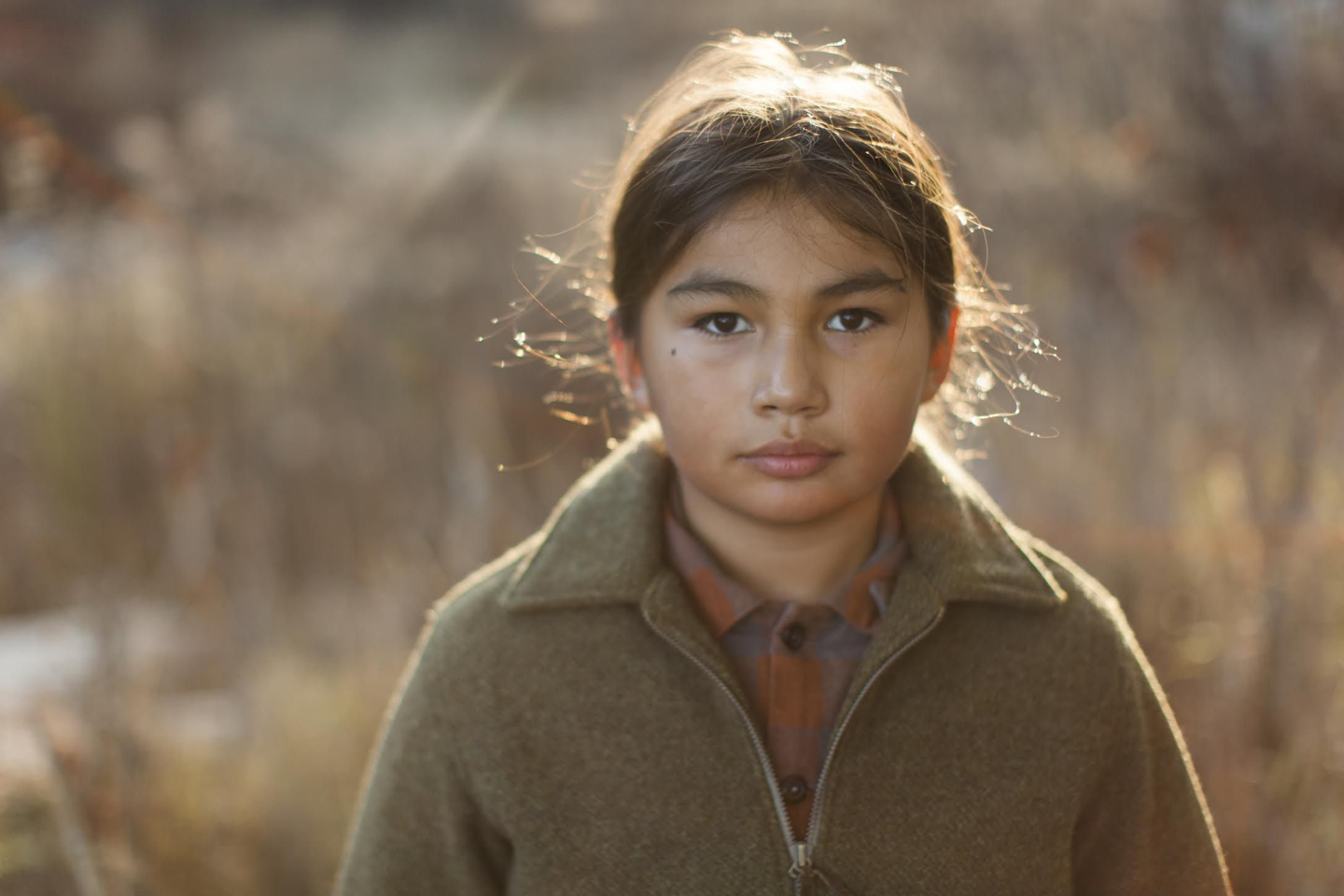The story needed to be told. Though it develops as a dimensionless, very typical sports underdog hero story, Indian Horse reveals itself to be an impactful, even if simple, telling of the residential school experience.
With Clint Eastwood as executive producer and Stephen Campanelli (who has operated cameras for some of Eastwood’s films) directing, the story was adapted from the 2012 Richard Wagamese novel of the same name. It follows Saul Indian Horse, who was stolen from his parents in the late-’50s and held in a residential school, tracking him into adulthood and reporting on the choices he makes following his time at the school.
When Saul arrives at the school, he’s already fluent in English. He notes that he learnt it from his parents. It seems to give him favour as one who’s already been introduced to God’s way. The first part of the film asks the viewer to consider the trials of residential school children before it progresses into the sports genre. At the school, a young priest, Father Gaston, who establishes himself an advocate for the children, builds a hockey rink and coaches a team.
Saul’s too young to play, but he sets his mind on it anyway. He offers to clean the rink, just to get on it, and Gaston concedes. Saul practises early each morning in secret. Several montages later, he’s the best player.
Though the subject matter weighs heavily because of its nearness to home, 60 minutes into the film the viewer is still asking, “Is this just a sports film with a dark subplot?” Being that the Catholic indoctrination elements, which should convey a sense of horror, are showcased as not much more than the adversity which must be overcome to be the best hockey player on the team.
The issue is that for most of the film, Saul is presented as a disadvantaged kid who finds solace in the game. Other than implying the obvious about the residential schools and 1960/70’s racism, the film seems to be more interested in Saul the hockey player than Saul the boy. The viewer never gets into his head.
For most of the film, the story isn’t acted out on-screen but is, rather, implied. Though it lames the story, it does keep the pace brisk. A success of the film is that it presents itself as a Disney-esque movie — it is very watchable.
Periodically, Saul from the future speaks through voiceover narration. This could have been a potential in into Saul’s mind, and though it occasionally gives a little context for the situation, this voice never reveals anything about who Saul is or how he feels about the incredibly strange world he now finds himself in.
As an expressionless youth throughout most of the film, Saul seems to allow life to happen to him without much drive when not on the ice. Even on it, he meets illegal body-checks with the same expression he scores a game-winning goal. The characters are propelled through the story without much in the way of their own self motivation. There’s no reflection, things just happen. Saul is more of an image of what happened to residential school children than an individual personality.
Between Saul’s semi-pro success and his time at the residential school, he’s adopted by a family who manages an Indigenous hockey team. The son of his adopted parents is team captain, and when Saul arrives, rivalry is implied. Several game wins later, and without explanation, they’re now “brothers.”
This sloppiness softens the quality of the film. And yet, the film turns on its predictability when Saul leaves a heated conversation with his Toronto coach about overcoming his past in frustration. A long shot of him walking towards the camera fading in and out implies time passing. Now he’s an old alcoholic, wandering aimlessly.
The voiceover narration kicks back in, but speaks mystically. In the final act, another montage of Saul’s lived pain, much of the subtleties of his residential school experiences are revealed to be far more complex and sickening. It seems to reflect back on itself, perhaps even topple itself, asking the viewer to scrape their memory of what they thought they knew about the residential schools in light of this new information. It’s easy-viewing charm accomplishes, for the sake of the final act, a comfortable build-up to an unsettling closure.
Just before the credits roll, facts appear on screen. This positions the audience to consider what they just saw in the context of reality. It’s a an addition that brings the fictitious narrative into alignment with well over 100 years of Canadian history.
Though the film’s development is weak, it’s an immensely important film. Its simplicity, and traditionally Hollywood style, actually works for it, making Indian Horse an accessible film that broaches the subject matter without proselytizing. It accomplishes what it needs to.


